|
VPC Peace & Justice Resource Committee is pleased to announce that the winner of their 2015 Peace Essay Award is Liliana Serrano, from Sahuarita High School. The award was presented by Cara Bissell on Thursday, May 14, at the Sahuarita District Auditorium. Liliana plans to use her contest earnings to help her with expenses at Pima Community College. She is continuing study to become a teacher. Her essay included not only examples of Martin Luther King, Jr.’s famous passive resistance but also that students have historically been part of a nonviolent movement towards peace. Liliana included her personal testimony of keeping the peace nonviolently among children in a day care center where she is employed. She concluded that nonviolence is the “only” way to solve problems. May Liliana’s optimism be common for each of us and passed on to Congress, too!
0 Comments
Our First Participant-Generated Entry for the Blog!
We've been looking at models from contemporary corporations for guidance. Last week I began looking in the Bible with the question stated above. Since Acts 1, when Matthias was the first chosen to lead the apostolic ministry, churches have arrived at turning points in their worship and traditions. What do these early churches have to say to us? In Revelations John sends a letter to each of the seven churches in Asia. In a vision in Chapter 1, John foresees the future of these churches. He follows in Chapters 2 and 3 with very direct statements of encouragement and admonition for each of the churches. He repeatedly says, He who has an ear, let him hear what the Spirit says to the churches. Each church receives praise for what they are doing well and where they excel, followed with direct advice as to what they need to change, until the letter comes to Sardis, who is accused of being dead. However, even Sardis is given the call to wake up. Each of the admonitions is pertinent today and worthy of study. What do they have to say to us? He who has an ear, let him hear what the Spirit says to the churches. Bette Bosma The following article by Thom Schultz was originally posted on Holy Soup These are turbulent times. And the church is swirling in the maelstrom.
I was reminded of this turbulence as I reviewed Holy Soup’s top blog posts over the past year. Three topics catapulted to the top, fueled by viral sharing across the country and around the world. Here they are, with a few thoughts about what caused these topics to explode: 3. “The Church’s Frightful Kodak Moment.” People seemed captivated by examining the similarities between the demise of the Eastman Kodak Company and decline of the American church. Two big institutions. Each struggling to adapt (or not) to the changes around them. The big response to this article prompted me to hunt down Steve Sasson, the Kodak engineer who tried to get his company to embrace digital photography in the 1970s. I eventually found Sasson and interviewed him for our documentary film “When God Left the Building.” He provided some additional insights about the Kodak story that have significant relevance to the church’s current challenges. Sasson explained how Kodak muddled its mission. “We got confused as to what business we were in. Are we a chemical company, are we a film company, are we an imaging company. What are we?” I’m afraid the church today suffers from a similar confusion. Are we here to build attendance? to make the pew-sitters comfortable? to reach the lost? to keep our ministry jobs? And Sasson talked about misreading the customer as digital photography emerged. “They didn’t care that the pictures were horrible, that the video was distorted. That didn’t matter to them at all. I was struck by the fact that quality was lost on them, but immediacy was everything. They used (photos) to instantaneously share their environment with their friends. They were using pictures differently.” Many church leaders today seem to believe that Sunday production quality trumps everything else, including addressing people’s longing for a relational approach to spiritual growth. 2. “The Rise of the Dones.” This post named a large and growing segment of the population–highly active, spiritually mature people, who are simply done with the structured church. The blog response largely divided into two camps: the church establishment and the Dones themselves. Many current church leaders chastised those who have left the established church. They assumed the Dones either abandoned their faith or discounted the biblical concept of community. But many Dones responded that they are now more engaged than ever–in a more organic definition of church, the Body of Christ. I continue to be struck by the number of pastors and other ministry leaders who now count themselves among the Dones. One wrote: “Yes, I am DONE! Now I am ministering outside the established church, healing, and at peace.” 1. “Why They Don’t Sing on Sunday Anymore.” This one topped them all–and continues to flourish. In this article I explained how, from the pew perspective, current practices are causing so many church attendees to refrain from singing. My perspectives ignited a storm of response, including from worship leaders and musicians who defended their status quo. Last week I received a question from a worship pastor who honestly wondered what I would advocate for a more inviting worship atmosphere. Here’s what I shared with him:
The following article by Thom Schultz was originally posted on Holy Soup A friend of mine visited a large, famous church on a typical Sunday. The worship band performed with precision. The lighting and fog effects were state of the art. The pastor presented a polished sermon amidst specially built staging.
Later in the week the pastor shared this church’s ministry secrets in a seminar. He described the staff’s single-minded emphasis on excellence—for the Sunday worship services. He shared their internal mantra: “It’s about Sunday, stupid.” I get the point. For many churches, the Sunday service is the initial introduction for the uninitiated. It’s the main conduit for new members. It’s the only time most churches ever see the majority of their people. It’s the culmination of a week (or more) of staff planning and rehearsing. It’s the main conduit for tithes and offerings. I get it. But I fear this laser focus on the Sunday service is slowly anesthetizing the church and clouding its real mission. It’s no wonder that many people come to worship for an hour on Sunday and then fail to live their faith once they leave the church building. I’m afraid it’s too easy for an It’s-About-Sunday-Stupid (I-ASS for short) church staff to begin to shade its mission toward merely filling seats on Sunday morning. That’s not the same as a clear mission to bring individuals closer to Jesus, to transform their lives, to provide relational support for the Body of Christ. Instead, the I-ASS mentality can send the unfortunate, subtle message that the ministry is really all about the show—and its showmen. The church is not about the show. It’s not about Sunday. It’s about God—working in and through people—Sunday through Saturday. Everywhere. We numb our people’s sense of mission and ministry when we imply it’s all about what the staff performs on Sunday morning. The weekly worship service is not the main event. It may be a reflection and a celebration of the main event, which is God at work every day in and through his people. On the job. At home. At school. In the car. On the bus. At the store. On the field. Rather than cheerleading an I-ASS myopia, it’s time to widen our idea of church, of ministry. It’s time to shift more energy and emphasis into other, broader ways to be faithful to our calling–as the church. Church is not an hour on Sunday. Faith is not a staged show. Evangelism isn’t the act of parking butts in pews. Discipleship isn’t the process of dispensing oratory to passive spectators. We don’t “go to church.” We are called to be the church. Every day. Everywhere. The following article by Cameron Trimblewas originally posted at http://www.ucc.org/stillspeaking_weekly_a_spirited_note_to_church_leaders January 14, 2015
Written by Cameron Trimble I am bored with the narrative of church decline. Sure, fewer people are going to church. Some churches are closing. I understand the impulse to throw your hands up in despair, change occupations, or hold out until retirement then wish the next generation good luck. Yet I’m optimistic. I am seeing a new path of enormous opportunity -- one that calls us to greater imagination, risk-taking and reinvention. God is leading us down this new path, and I see churches finding success on it. Church renewal is not about restructuring all we know and love about the Church in favor of some trendy new format or program. We question form but remain true to function. We keep our core commitment to transform lives for the sake of the Gospel while allowing for entrepreneurial new formats, structures and experiences. I’d like to suggest we begin with these five steps: 1. Stop settling for mediocre worship. Transforming lives is not a nice byproduct, but the primary mission, of the Church. When was the last time you left as a new and renewed spiritual being when you attended church? You may leave socially fed and physically fed, but leaving church spiritually fed is becoming a rarity. I know, such brash statements are sure to arouse significant defensiveness. However, I still would ask, if we offered the world a transformational encounter with God every single Sunday, do you think we would have trouble filling our pews? Our job as church leaders is to create at least 52 transformational experiences every year. That’s 52 opportunities a year to change someone’s life as they encounter the sacred. 2. Turn members into ministers, not managers. Who joins a church because they want to serve on another committee? No one. Yet how many of our local congregations offer that as the only way to participate in the life of the congregation? Here is the truth folks: the vast majority of churches in the United States have 150 members or less. It does not take 26 committees to manage that. Instead of committee members, turn them into leaders. Instead of managers, give them mission. Empower people to engage in life-changing work rather than institutional management. Let them BE the Church and change the world … and then hire a manager. 3. Create environments of innovation. In his book Church 3.0, Neil Cole writes, “Whether seeing tall ceilings with stained-glass windows or meeting in a box building without windows, the actual system of church has gone relatively unchanged. You have priests and pastors, Sunday morning services with singing and a sermon, the weekly offering, the pulpit and pews, and the church building.” Why young people aren’t attending, why our technology is outdated, why national structures are broken and regional offices are bankrupt -- these are not mysterious challenges with no discernible solutions. These are organizational systems in need of innovation. I’ve been so impressed by the new partnership of the Evangelical Lutheran Church of America (ELCA) and Episcopal Church working together to start new ministries. One of their exciting new projects is the Baltimore-based Church on the Square led by the Rev. James Hamilton. Through addressing wellness issues, nurturing arts and culture, improving the environment, the Church on the Square is enriching community life through faith, spirituality and doubt. It’s a laboratory of innovation with Jesus at its core. 4. Seminaries are great, but we need more learning partners. I appreciate seminaries for their important role in the formation of church leaders, but to assume seminary education is all one needs to engage in effective ministry is ludicrous. Seminaries are not equipped (yet) to train us in web development, financial management, building maintenance, landlord procedures, marketing and branding, media relations, database management and, in some cases, nonprofit management. Other degree programs do not pretend to teach students all they need to know. Instead, they have robust continuing education programs that efficiently teach the more practical, hands-on skills. Evolving industries require continuing education opportunities to keep professionals up-to-date on emerging thoughts, tools and trends. Why don’t we require the same? 5. Start embracing technology. The reality is that most people working in secular settings already live in a world of web meetings, video conferencing, Facebook and blogging. They have embraced e-marketing and YouTube, Twitter and iPads. For us to not embrace these tools and use them for their proven effectiveness makes us not only look obsolete and irrelevant, but we’re acting that way, too. Think of the time you would save by using reliable contact management software rather than maintaining your church membership lists on an Excel spreadsheet or a membership book. Think of the funds you could raise online rather than only by cash or check on Sunday morning? Think of the impact you could make by incorporating a powerful video clip to illustrate a sermon point, connecting the modern to the ancient. Think of the money (and trees) you would save by emailing your e-newsletter rather than printing and mailing a hard copy to every member. The intelligent use of technology could save thousands of hours and dollars for just one church. I love the Church, and I do not believe that we are presiding over its death. I do have faith that the United Church of Christ can have a vital and important future. But as leaders, we must have the hope followed by the courage to forge new ways forward. I believe in resurrection. Sparking Ministry Conversation Why are you hopeful about the future of your church? What difference is your church making in your community? Who would your church be and what would you be doing if you were brave? The article below is taken from the Presbytery de Cristo wesite, http://presbyterydecristo.org/iLasNoticiasdeCristo, dated Jan 16, 2015. If the motto of the attractional church is "Y'all Come," the trumpet call of the missional church is "Go and Show!" We are called to Go and Show the Gospel to our neighbors and in our communities. Thus, the first
value - from home to first base on the Missional Living baseball diamond - is that missional living is ministry outside of our church buildings. The second value is that missional living is service oriented. By highlighting a service orientation, this definition of missional living conforms both to Gospel mandate as well as church practice; thus, it will be both easy and difficult to comprehend and internalize. Let me try to unpack the potential both for easy acceptance and a hard confusion. The notion of missional living as service oriented is easy to comprehend and internalize. Passages such as Isaiah's definition of a true fast as encompassing the ways of justice for others and all, not just personal deprivation (Isaiah 58), are companions with Jesus' parable in which the sheep feed the hungry and clothe the naked thereby serving the Master unawares (Matthew 25). This is the air we breathe as Presbyterians! And so our churches have a storied tradition of leading the ecumenical community toward establishing Food Banks, organizing the local Habitat for Humanity chapter and giving to the One Great Hour of Sharing. All of these activities are sacred; all of them make Jesus happy. Yet they are insufficient for the robust life of Christian faith to which we are called. The manner in which service orientation is so much a part of our faith DNA also creates the potential for confusion as regards missional living. The temptation, it seems to me, is to practice our service orientation from a consumerist model, which views the church as "Big Brother" and the poor, needy and helpless as "Little Brother" (please forgive the sexist terms). Do we see the danger in the terms I just used? Those who are recipients of our generosity are NOT helpless; to say otherwise is condescending in the extreme. And though they may be in need and may experience poverty, these definitions with which we saddle them are not their deepest truth. Rather, the deepest truth of these folks whom we seek to serve are found in such terms as "child of God," "father," "mother," "friend," and perhaps also "brother or sister in Christ." Missional living that is service oriented begins to break down the hierarchical, consumerist models with which we have served in the past. It begins to lower ourselves in our own eyes in order to be able to see truly the person who stands before us. That person, the recipient of food, shelter, clothing or 1,001 other services daily rendered by churches, also stands before God; indeed, we stand together. Missional living may not require a change in our activities of serving, but it pleads for a transformation of our hearts and minds, a deflating of our egoism and arrogance in the way in which we conduct that service. Bounding in Hope, Brad Munroe The posts in the Conversations Class category (under Categories, on the right side of the page) contain writings for and by the members of the "Changing the Conversation" class taught by Eloise Fredrickson using a book of that name as the theme. We are looking at the huge changes that have taken place in mainline Protestant churches over the last several years and trying to figure out how to respond to them in a way that will deepen and sustain the life of our congregation.
"CIVIL RIGHTS WILL BE HAD FOR ALL" From journal entries from the Mosaic of Peace trip to Israel & Palestine April 28 - May 10, 2014 by Cara Bissell Tuesday, May 6 - Bethlehem - Part of the West Bank "occupied" by Israel. Three people share information with us: Jessica Montel has worked since 2001 as the executive officer for the Human Rights Network - Israel Women's Network. There have been editorials in the Washington Post among others. Jessica grew up in northern California as a Jew. At age 16 she came to Israel on a 6-week tour which was a positive one dimensional experience – a perfect view. Then she took the opportunity to study in Israel a college semester and she says, "I saw systemic oppression and then the dilemma: What to do? How do I reconcile the conflicts?” Jessica needed a special permit to be here in Bethlehem to speak to us. May 5 (yesterday) was Holocaust Memorial Day. Today is Independence Day, yet Palestinians have it as a day of expulsion of an entire society and the Israeli occupation. That Palestinians were historically with the Axis Powers and against the Allied Nations which along with the United Nations decreed the state of Israel into its latest existence went unmentioned. It has been 25 years since the organization was started by Jessica. How are universal human rights violations addressed in particular situations. Palestinian infighting is also a significant dynamic (places where responsibility is not recognized, where women are subjugated to the men, where “infidels” are too stereotypically thought of as all non-Muslim & universally held by most Muslims if not the Muslims in power). Occupation: A legal framework, not a moral one. Amorphous - temporary - (yet 47 years ongoing) with respect to equality and justice. What are limits and guidelines? There are conditions that keep occupation 'entrenched': + Exploitation of natural resources (land, water, etc.) + Settlements + Two systems of law + Military system tries Palestinians with lack of due process + At least three different territories Gaza (border between Gaza and Egypt is sealed), Jerusalem, West Bank + Creation of the Palestinian Authority where day-to-day activities are controlled by the Palestinian Authority The above conditions enable occupation to continue and be entrenched. Information is in good supply and yet Israelis don't see it. There are areas that are forbidden for entry by both Israelis and Palestinians. Rabbi Hartman, one of the two Rabbis we heard said, “it is peace, it is not justice”. [While the Palestinian Authority is made up of Palestinians controlled by the Israelis, it has charge of the West Bank. For the “PA” to be allowed to control The Gaza Strip – something that has been proposed long before the August military efforts by Israel in Gaza – a solution to the blood shed may be won.][i] PROJECT Video Camera - 220 cameras in the West Bank. Hebron is the most severe case of extremism in occupation in the West Bank. Hebron is a surreal situation. The cameras’ purpose is to document and reach people outside and to aid the legal system. Unexpected results: victims become enabled, empowered people are able to use cameras to help more Jewish and Palestinians to be more understanding. The bottom line is small successes are making positive change, indicating that working together is possible. It was mentioned by Jews, Christians, and Muslims alike that visitors should not go to Gaza because it is an open-air prison. [While inside the West Bank, it did not seem the Palestinian Authority had any oversight here – similar to The Gaza Strip][ii] Sam - Sam's father is 74 years old, living in Youngstown, Ohio. Sam moved in 1990s to West Bank from Ohio. Business initiatives western style shopping centers are his specialty. Sam used his children to eloquently express the Palestinians’ differences from Israelis in their homeland of Palestine occupied by Israel. Sam says: "We Palestinians are about to redefine our self-determination from 2 states to Civil Rights. The model for how the game will end is over. The time may be 100 years. Secretary of State Kerry remarked: 'The 2- state solution has two years left' and I think we're in the second year now. The paradigm of 1 state or 2 states is limiting - not needed. Equality with any political system is necessary. We're unreasonably reasonable and Israelis won't accept that. A Palestinian in Haifa longingly wants to go home, forgetting temporarily there’s an airport where his house was. 'Israel is the Jewish state' cannot be accepted as it denies inalienable civil rights of non-Jews.” Jessica interjected: "Israelis life is very comfortable & we choose not to know the plumbing that enables this comfort, not dissimilar to United States Citizens part in all this. Most Israelis are not subjected to that litmus test just as we United States Citizens are not. Most Israelis as U.S. citizens do not refer to them (our) -selves as Zionist. I am an Israeli Patriot Jessica went on to say. There are four kinds of Palestinians: 1) Citizens of Israel[Father Elias Chacour is an Israeli citizen], 2) Palestinians outside of Israel, 3) 1967 Palestinians occupied by Israel, 4) Palestinians in Gaza with no rights” When Sam moved back to Israel, his friends said, ‘Calm down, Sam, there is no military occupation that lasts forever; the Turks were here for 400 years and left.’ Sam continued: “Ideology promotes ‘whatever.’ A culture of violence of Israelis against Palestinians occurs where i) Companies such as Caterpillar, Hewlett Packard, Motorola, and SodaStream promote violent and nonviolent actions in occupied land such as the West Bank. ii) Countries have - given Israel the nuclear bomb (France) - been post 9/11 suppliers of Security Industry - Israel is the testing ground [drones, biometric software, ... suppliers of violence! When the U.S. sells a plane [or other armaments], it is hard for the United States Government to take a position against Israel, its “Battleship in the Middle East”. There is a culture of fear. The Holocaust is used to perpetuate occupation - An 18 year old can easily be indoctrinated through the cultural environment to do atrocities. WHERE IS PEACE? Peace is found in the: 1) Family (holds us together - something we've lost in the U.S.)[iii] 2) Spiritual Home (whether synagogue, church or mosque) 3) Community (whether real or virtual) a) neighborhood b) work office c) Facebook - internet(we can promote peace or not!) Peace has become a bad word in Palestine Sam stated. We have to focus on Justice to address interfaith issues.[iv] 1) Look for small groups to form pockets of peace 2) Take actions to make things better 3) Commit to nonviolence Choosing nonviolence is a choice and will work. A prolonged situation that defies the definition of Occupation – It’s too long. Start from now for the 50th year of occupation to tell Israel to: 1) give us our country 2) give us humanitarian rights 1948 was like thousands of 9/11s in Israel. The result has been massive settlements in non-authorized Palestinian and UN-officiated living areas.[v] 1994: 100,000 settlers [exclusively Hasidic Jews] 2014: 500,000 settlers [exclusively Hasidic Jews - predominantly from the United States] My (Sam’s) challenge as a Christian and as an Evangelical – My call - to point out alternatives to Zionism. People in the Holy Land are hungry for Peace with Civil Rights. I must help answer ‘How come most of my people [U.S. citizens] are so strong for Israel and so much against Palestinians?’ It is tragic how much Zionism has taken all. Israelis are powerful - militarily dominant Muslims are powerful - they are many Christians are most vulnerable and are in danger of being eradicated from this part of the planet Question with statements: What are Alternatives to Christian Zionism? Given that: The New and Old Testaments hold the answers. 1) Old Testament - Jews are God's People (land is promised to Jews) 2) New Testament - All people are God's People and My Kingdom is within you. and NO ETHNIC GROUP IS SINGLED OUT. ALL people are included! Answer: Minister to Muslim's needs – English as a Second Language (for all faiths); coexistence is primary. Rumors and fictions must be dealt with and dispelled. Question: How vital is Christianity in Bethlehem under occupation? Answer: We are to speak out. It is vital. 600 Evangelical Leaders from around the world have come here and are going back to spread the word. Lees College - now a Tennessee University - Christians in Mexico, Guatemala, Bethlehem - and occupation students and other groups. It’s so strange to them that ‘there is a God-ordained blessing for a Jewish state.’” Next on the agenda of speakers after Jessica and Sam finished… Alex Awadii – A Bethlehem Bible College Professor for 24 years; Pastor Emeritus at Jerusalem Baptist Church since 1994. He's a Palestinian Christian. He was born in 1946 living in Masada, a part of Jerusalem. During the 1948 war (Zionists vs. Jordanians), Alex's father was a worker in a local hospital. His father was killed by a sniper. Alex was one of seven children, ages 2 to 11. His Mother had the philosophy "never look back; look forward." She put her children into "boarding schools" (orphanages) as she went back to school to become a nurse. The boys went to “Boys Home of the Boys” and the girls to "Girls Home for the Children." Alex's mother was energetic - dedicated in her faith. When Alex tried to interview her for a book he wanted to write, she declined. Alex went to his uncles, brothers, and sisters. His book is titled Palestinian Memories. In reality, the conflict started way before 1948. Alex’s brother, Bashar Awadii, was arrested and imprisoned for advocating active nonviolence.[vi] In 1967, Alex took a course in Switzerland and he was asked to be a pastor in Jerusalem. Having finished his study, "Switzerland didn't want me. Israel didn't want me either. So, I wrote and studied in the U.S. and became a U.S. citizen. I lost my right of citizenship in Israel/Palestine.” He obtained a visa/passport as a pastor of a church in Bethlehem lasting a year at a time. Missionaries with the Methodist church through Methodist Women wrote letters to Israel and he was allowed to return. ********** A former Israeli Soldier in support of Breaking The Silence: "I believe all people regardless of his or her faith should have the right to self-determination." “I am an Israeli Zionist.” “You[vii] are responsible as much as the Israelis are!” ********** We took a bus trip where the Dar al-Kalima College spokesperson greeted us. The Bethlehem Campus of the Dar al-Kalima College started in 1979 with 150 students. Twenty to forty students graduate annually from this interdenominational Indigenous Bible College. Angie Sahah: The dedication of this building (The Arts College outside of Bethlehem) was May 2, 2014. There is a second floor auditorium, workshops on the first floor, an upper floor library (in the works) where a wish list is put up on Amazon.com and tourists coming to Israel/Palestine are asked to bring books on the list. The hope for a better life offering a B.A. is primary as students are taught how to model a better life. The Israeli ministry thinks of it as a waste of time. Art, dance, theatre, drama, writing, photography, glass and ceramic, jewelry, tour guiding, documentary filming, contemporary art are used as tools for “positive self-expression.” Question: What would you charge us to do as we go back? Answer: Peace is good anywhere, everywhere. Peace in the Holy Land is important for Syria and Lebanon (where most of the refugees from the Holy Land are). Put articles in local newspapers; share the realities; write to Congressional representatives; write to the White House; write to the "higher ups" in the PCUSA. Scripture Mathew 5:21-26 was quoted. Bottom line: Make peace before you pray and make peace with adversaries before going to the courts and before offering gifts to God. As we left to go to the Refugee Camp, we were told we couldn't take pictures. Selah our tour guide - a Muslim (whose three boys attend a Christian private school) - contradicted this instruction, but I did not take pictures. Others did bring their cameras and did take pictures. As we walked perhaps a mile up and around a section of the camp, it was obvious that electrical wiring was ancient; many homes are substandard, one with an open window without screens or windows - only a towel draping the opening. The residents (all Muslim at this camp) are, in the vast majority, descendants of the original displaced people from Israel at the time of the 1948 agreements. The mosque looked to be in very good shape. There is a minority of houses that look even contemporary from the outside and some construction of a modern-style house going up (the refugees must use their own money) towards the top of the hill that looks promising for a small number of refugees. The sewage treatment can only be surmised; urine was smelled during part of the tour. Seeing inside of any of the homes was not possible. I can imagine that some homes have an admirable living standard, but that is only speculation based upon experience with New York City tenement homes. The population density is high and the medical facilities in the camp are minimal and haven't expanded with the population, we were told. The refugees are, however, free to leave and come back daily as they wish for work/play outside the camp. The fact that a UN advisor is paid $60,000 per month to "oversee" the camp has led to much discontent among the residents who on the average earn a pittance. The camp has "UN" written in large light blue letters on walls and on the trash containers outside the complex that further identify the camp. Mural-type paintings/posters were noticed on the walls of the streets depicting martyrs killed by Israelis AND also the strong message that killing on both sides should stop - that peace be the norm. I had reached a point of seeming saturation. We returned to the International Center in Bethlehem. After dinner at the ICB, we were treated to a play, “Shakespeare's Sisters” by the Al Harrah Theatre. The play was performed with two men, and several women depicted women's rights and the ability of a single woman over "a certain age" who dared to 1) look pretty and 2) help others (represented by manikins). The play addressed the intolerance of “the system” and of individuals who are slowly changing. "It may take 100 years but, the End Game has been written, There will be Civil Rights for ALL, whether there is 1 state, 2 states, or some other form of government, it does not matter." [i] This addition was taken from the Veterans For Peace document read August 9, 2014 by Cara Bissell
[ii] Interjection by Cara Bissell [iii] Sam here counts himself as a U.S. Citizen as he grew up in the United States and has dual citizenship. [iv] This statement points to the fundamental difference between Palestinians (Christians & Mulims) and Jews for the Jews such as Rabbi Hartman realize Peace at the expense of Justice is preferable to Civil Rights for all BUT the Palestinians are demanding with an admittedly nonexistent position of power except for ideal logic – “unreasonably reasonable” – to have Justice – “Civil Rights for All People”. [v] More than one speaker pointed out as well as Veterans For Peace sources Israel is merely repeating the Historical process the United States has used with the American Indian. Push the people of the land into other areas of land, make treaties, continue to expand until more “pushing” is needed and repeat the process with little to no regard for the people being pushed. “They are savages”, “they react inhumanely”, “they treat their women horribly”, “they would destroy us if they could”. It has been said, “In order to have a war, the enemy must be made to be not human – an agent of the devil.” [vi] This reflects the point of view of the Israeli Military(Cara Bissell’s conclusion) of which Rabbi Hartman was a part as a tank commander who said “by all that is known I should have been killed”. He stated “I cannot support ‘Passive Resistance’ “. [vii] Speaking generally of The United States – its citizens. Judy provided this map which shows the locations visited during the trip: From Cara: The trip was everything I could have expected and so much more! I expected to see overt clashes between faiths. There were none. YEA! I didn't expect to see indications of how much of an "Apartheid" state there actually is, with fifty-some laws applicable for Palestinians that are not applicable for Israelis. One humorous (almost) nonsensical law is that Palestinians cannot own cows! Sooooo, the speaker mentioned some Palestinians (he mentioned only his case) have bought cows (from Israelis) and moved them one step ahead of the Israeli authorities that want to confiscate them.
Okay time for a little break. Yes, we had fun. People in our groups rode a camel if they wished. Case in point above!
I'm still processing this time. We (the 108 Mosaic of Peace Presbyterians) have been asked by multiple speakers to communicate our trip and to write Congress & even the Sec. of State AND President. Love Forever With Each Passing Day's Ongoing Progression In Our Higher Power Cara Finally as a P.S. The sights, Jericho [where the YWCA school for 5 and 6 year olds is 1000 feet below sea level (and above 100 degrees Fahrenheit we were there)], Jesus's ministry in Capernum, His crucifixion sites, His Birth Place in Bethlehem, His baptism in the Jordan River, . . . I saw & experienced it first hand - AWESOME! On the other side of it all, ******We are on Holy Ground wherever we happen to be.***** Many people have told me the music program is one of their favorite things about Valley Presbyterian. While Christmas and Easter are always big times of year, for those of us in the choir, I think our year tends to culminate in the Favorite Anthems Concert. The weeks leading up to the Favorite Anthems concert this year were scattered with surgeries, stumbles, and even falls, and I mean that literally - physical falls, with ambulances and everything! Every little glitch added to the stress and worry that our director, Kay, always feels at this time of year. Kay, to all of our benefit, can be a *bit* of a perfectionist, so just imagine someone with very high standards trying to create an hour of perfection (twice!) with 70 or so individuals with all manner of personal factors at play! Fortunately, in spite of any physical or mental factors, all of us unite spiritually when it comes to performing the music. The 15th annual Favorite Anthems concert was, as always, a success. The house was packed and the energy was high. How could anyone not be mesmerized by Fred Fox and Joel Pierce’s finger dance as they played their duet on organ and piano? Furthermore we heard Linda Freeman’s soulful gospel sound during her solo, Katie Sayre and Dick Johnson’s beautifully blended duet, the powerful, harmonious voices of Valley Four Barbershop group, and the sweet, forlorn sound of the women singing Breath of Heaven. I can’t imagine one person in the audience, no matter their age or hearing, sat perfectly still during Joel Pierce’s jazzy rendition of This Little Light of Mine, and of course throughout we heard the emotional, moving sound of the many choir voices united in song after song. This year's Favorite Anthems concert was truly a special time, and I venture even Kay would admit it was worth every bit of the stress!
|
Archives
May 2015
Categories |
- Home
- News & Events
- About Us
- Worship
- Ministry
-
Mission
- Overview of Mission
- Patio Sale
- Cafe Justo (Just Coffee)
- Casa Vida Nueva para Niños
- Community Food Bank
- Crossroads Nogales Mission
- Compañeros en Misión
- General Mission Support
- Hands of a Friend
- Mission Quilts
- Operation Christmas Child
- Operation Mobilisation
- PCUSA Seminary Support
- Posada Life Community Services
- Prayer Shawl Ministry
- Presbyterian Campus Ministry
- Rice (Bob & Kristi) in the Congo
- St. Andrew’s Children’s Clinic
- Valley Assistance Services
- Youth on Their Own
- Gifts & Giving
- Online Giving
- Contact Us
- 2024 Fashion Show
- Two Question Survey
- Patio Sale 2024
- Home
- News & Events
- About Us
- Worship
- Ministry
-
Mission
- Overview of Mission
- Patio Sale
- Cafe Justo (Just Coffee)
- Casa Vida Nueva para Niños
- Community Food Bank
- Crossroads Nogales Mission
- Compañeros en Misión
- General Mission Support
- Hands of a Friend
- Mission Quilts
- Operation Christmas Child
- Operation Mobilisation
- PCUSA Seminary Support
- Posada Life Community Services
- Prayer Shawl Ministry
- Presbyterian Campus Ministry
- Rice (Bob & Kristi) in the Congo
- St. Andrew’s Children’s Clinic
- Valley Assistance Services
- Youth on Their Own
- Gifts & Giving
- Online Giving
- Contact Us
- 2024 Fashion Show
- Two Question Survey
- Patio Sale 2024

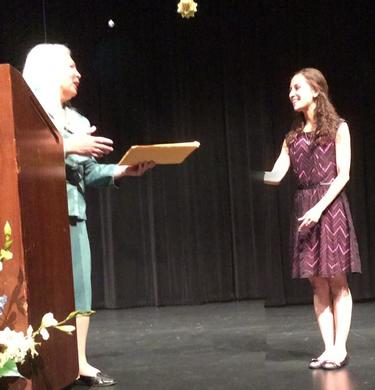


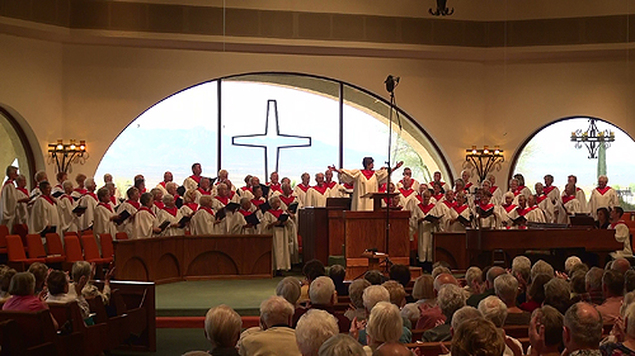
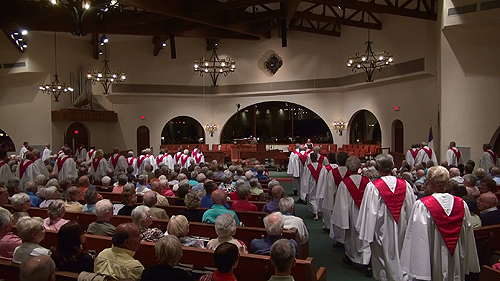
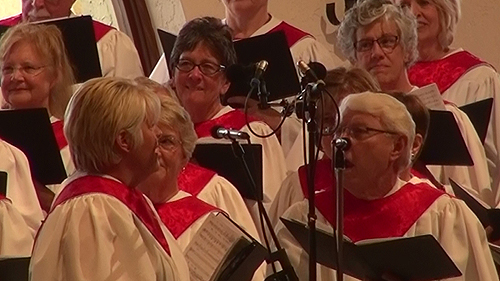
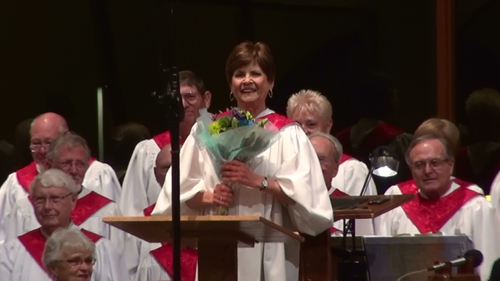
 RSS Feed
RSS Feed


